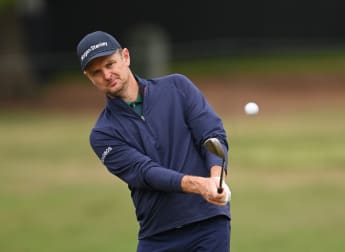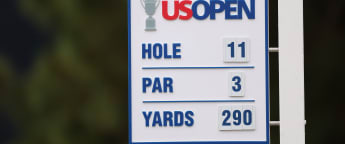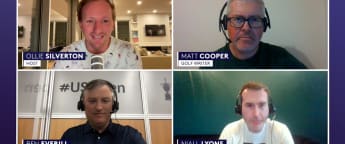With the Los Angeles Country Club set for its Major Championship debut this week, it is unsurprising that the host venue for the 123rd U.S. Open is the subject of much pre-tournament focus.

What is the history behind the location of the third men’s Major of the year, how does the North Course set up and what have the players been saying about it in the lead up?
Here, we explain all…
History
Founded in 1897, Los Angeles Country Club is one of the oldest and most exclusive golf clubs in the United States of America.
First known as the Los Angeles Golf Club, the original golf course was a nine-hole layout called “The Windmill Links”. Its name made reference to the makeshift clubhouse which was the base of an old windmill.
Another site was formed called the Convent Links where another nine holes were constructed, before its first 18-hole course was laid out in 1979.
Popularity led to overcrowding and resulted in it arriving at its current location and after extensive planning, the new clubhouse opened in Beverly Hills with 36 holes in 1911.
The course
The North Course was designed by British architect Herbert Fowler in 1921 and re-imagined in 1927-28 by George Thomas and Billy Bell.
It has since undergone work over the years, most extensively by course architect Gil Hanse, Jim Wagner and contributions from author Geoff Schackelford in 2010 after a five-year restoration project.
The scope of work included complete reconstruction of the greens, bunkers and tees.
A key element of the restoration also involved recapturing Thomas and Bell’s original scraped-out, craggy bunker style on the 325-acre site.
The par-70 layout features just three par fives and in contrast has five par threes, with the prospect of the 11th and 15th potentially playing more than 200 yards different in distance.
You can read more about the challenge facing the world’s best this week on the ‘short’ holes here.
It's US Open week 🤩
— DP World Tour (@DPWorldTour) June 13, 2023
📸: @usopengolf #USOpen pic.twitter.com/onlUVZuQoU
Past tournament history
While this week may mark a Major bow for the Los Angeles Country Club, the venue does hold a record of hosting prestigious events.
The Los Angeles Open, now known as The Genesis Invitational, was staged on the North Course on five occasions up until 1940, including its inaugural edition in 1924.
It also served as the host venue for the 1930 United States Women’s Amateur Golf Championship and the 1954 U.S. Junior Amateur Golf Championship.
More recently the club hosted the 46th Walker Cup in 2017, with Scottie Scheffler and Collin Morikawa both among the United States of America team that defeated Great Britain & Ireland.
Now, this week’s championship heralds the return of Major Championship golf to the City of Angels for the first time in 28 years, and the area’s first U.S. Open in 75 years.
California, however, is no stranger to Major golf, with Jon Rahm having won the U.S. Open at Torrey Pines in 2021.
The 1995 PGA Championship, held at The Riviera Country Club, the host venue of The Genesis Invitational, was the last venue of major golf.
More big events are to follow, with Riviera to host the golf competition at the Los Angeles Olympics in 2028 while the Women's U.S. Open will be at Los Angeles Country Club in 2032 before the men return to the same course in 2039.
What the players have to say
Most players in the field had little knowledge of the course before arriving on site, with many opting not to take an advance scouting trip around the time of the nearby Genesis Invitational due to the change in course conditions from February to June.
Long viewed as the hardest of the four Majors, many players have suggested the test they face this week differs from the norm of a U.S. Open.
Yes, the rough will be a challenge but the fairways appear wider, if not deceptively.
World Number Two Rahm said: “I like playing in California. I have a pretty good record, and I’m glad that this early in my career, I’m getting to play another U.S. Open here in this state. Magnificent golf course. It’s a great venue.
“Played a few years ago here, and the golf course has changed quite a bit since. Obviously a little more difficult than it was 10 years ago. But still a great golf course, great design, has the potential to be one of the best U.S. Opens we’ve seen.
“I think it’s deceptively wide. Those fairways look bigger than they play. You still need to strike it really well tee to green to be able to give yourself some looks at birdie.”
In good spirits heading into the year’s third Major 🙌 #USOpen pic.twitter.com/pysK15g0Nx
— DP World Tour (@DPWorldTour) June 14, 2023
‘It’s just a big-boy golf course’
Two-time Major winner Morikawa added: “There’s a drastic change of short holes to long holes that I think the par threes are some of the most challenging.
"Yes, some of them are very long. I think the USGA is going to be great about moving tee boxes around to where we’re not hitting 5-woods.
“But it’s just a big-boy golf course. It really is. You’ve got to hit good shots, especially with how penal the rough is. You’ve got to hit it in the fairways. It’s what you want for a Major Championship.”
An insider viewpoint
Speaking on the latest episode of The Tips ahead of the third Major of the year, PGA TOUR staff writer Ben Everill gave his insight into the course after he teed it up during a media day last month.
"If you are not accurate off the tee and more importantly into those greens you are going to have a buried ball and most likely have to hope to hack it out and doing your best from there," he said.
"It is going to favour the ball strikers like a U.S. Open always does. If you can find the fairway and therefore the greens you are going to be in good stead.
"If you don't you better have your absolute A+ around the green game, otherwise you will just be lapped."
Did you know?
Max Homa, who returns to his hometown this week, holds the course record at the North Course.
At the 2013 Pac-12 Championship, the then amateur shot a 61 during the first round on his way to victory at the college golf event.









